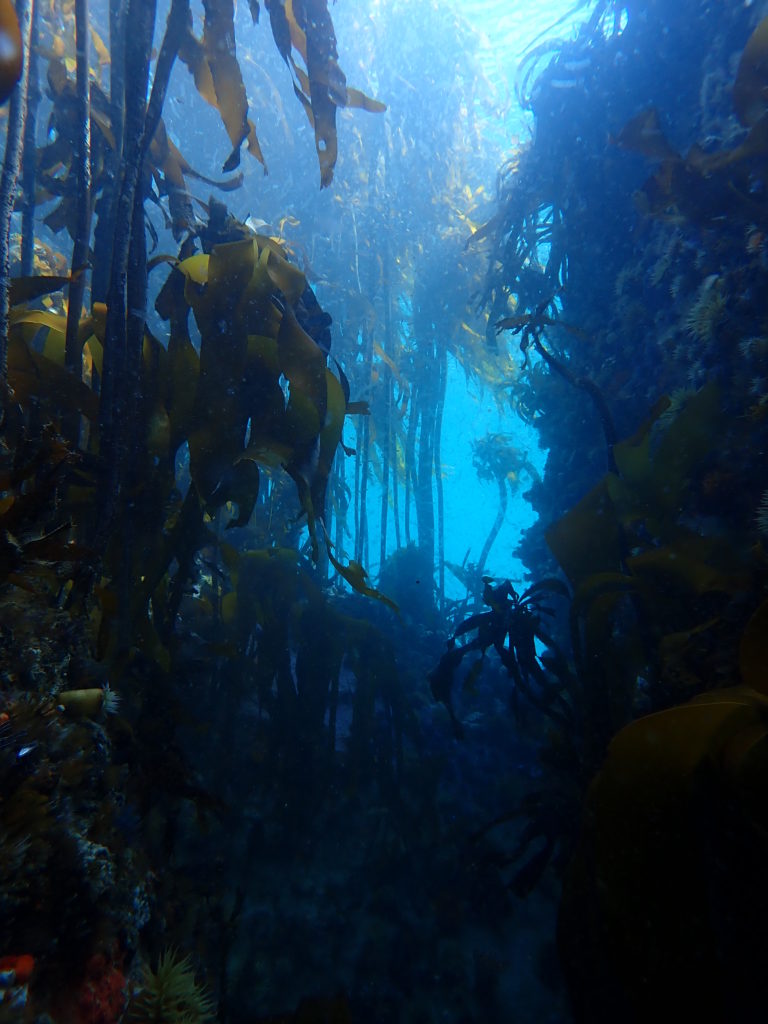The Great African Sea Forest is one of the most important ecosystems found in South Africa’s coastal waters. It is one of the worlds only kelp forests that are still continuously expanding. Kelp forests are important ecosystems for several reasons. Firstly, they are known as “carbon sinks”, the kelp draws in carbon dioxide from the atmosphere and stores it. Kelp forests, as well as marshland and wetlands, makes up roughly 10% of the earths surface, which, although it seems not a lot, if they were to be destroyed the impact of this carbon being released back into the atmosphere would be detrimental to environment, contributing to global warming. Another reason is that it is a habitat for a vast abundance of marine life and sustains an entire ecosystem.
False bay has the ideal environmental conditions for these kelp forests to grow as the unique conditions here are the right temperature, the waters are clear, and upwelling provides the right nutrients to support growth. Kelp survives in nutrient rich waters between 6-11 degrees Celsius and releases bacteria that everything in the ecosystem feeds on, one piece of kelp produces 30 billion spores per year, and some grow up to a centimetre a day making them very fast growing. They continuously erode in wave action and produces 64% of biomass into the food web. Four species of kelp laminaria are found here: split fan kelp laminaria pallida, bladder kelp macrocystis pyrifera, spiny kelp ecklonia radiata and sea bamboo ecklonia maxima. Sea bamboo is a fast-growing brown alga, it is the tallest and has holdfasts which anchors kelp to the seabed.

The number of species that can live on on an individual kelp is roughly 1000, so a whole ecosystem supports a vast amount of life, many species play important roles in maintaining these. Keystone species are sea otters that control grazer populations such as urchins. The grazers control kelp growth, there are issues affecting this which includes predators such as the west coast rock lobsters which are heavily poached. If urchins become too abundant the grazing will become uncontrollable, causing a demise of the kelps growth. Other threats include the commercial use of kelp, over exploitation, pollution caused by humans, destruction and climate change including rising sea temperatures. Another important life role of kelp is the breaking off and washing up on beaches to erode, this promotes sand dune formations and increases natural habitats, they provide a food source and attract other food sources such as flies for other animals to eat, however on man made beaches they are removing this kelp for the unpleasant smell and the flies it attracts as it “disrupts” tourism. One thing that is currently being done to protect these kelp forests is the formation of marine protected areas, 30% of coastlines to be protected by 2030, South Africa have 42 MPAs. More research and education are vital for these kelp forests to survive in the future.
3 Comments
WATCH: A Close Encounter with a John Dory (Zeus Capensis) in Simons Town, False Bay - Cape RADD · July 12, 2023 at 10:34 am
[…] Bay is a hotspot for biodiversity and is home to a multitude of species, each with its unique characteristics. Among them, the John […]
First Two Weeks As A Marine Field Course Student With Cape RADD - Cape RADD · August 31, 2023 at 10:30 am
[…] at the southern edge of the world, off the coast of South Africa, is The Great African Kelp Forest of False Bay. I journeyed halfway around the world, all the way from my […]
SCUBA for Science: Explore & collect data in Kelp Forests - Cape RADD · November 28, 2024 at 12:35 pm
[…] for Science program, where any SCUBA certified diver can assist us with collecting data in the Great African Sea Forest. Become a Citizen Marine Scientist for the day, learn about the amazing marine life, explore the […]